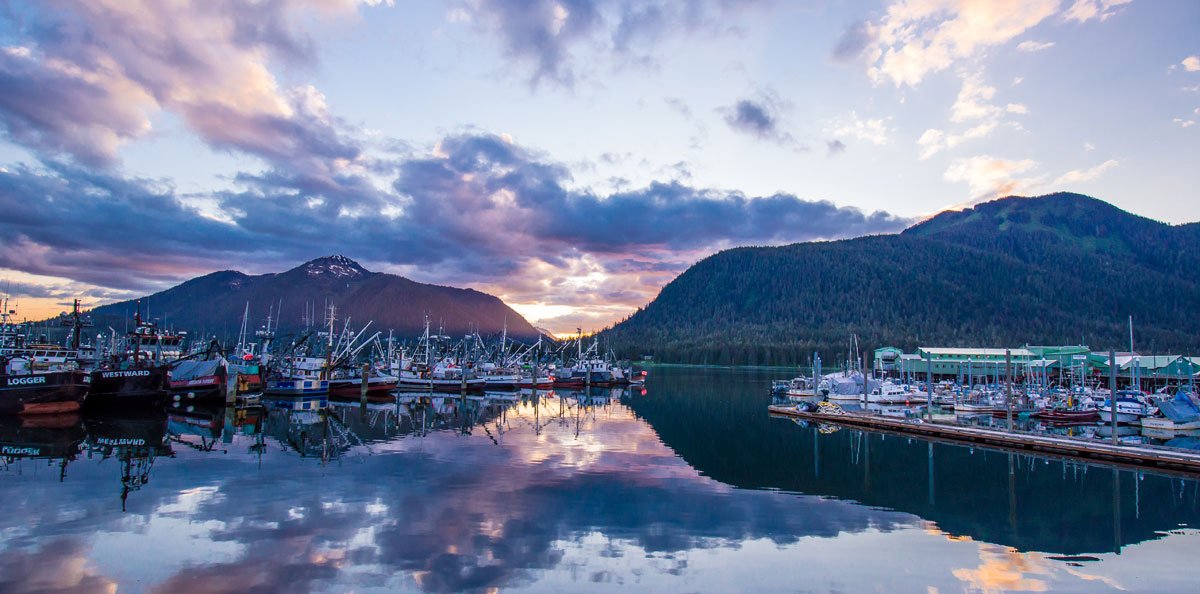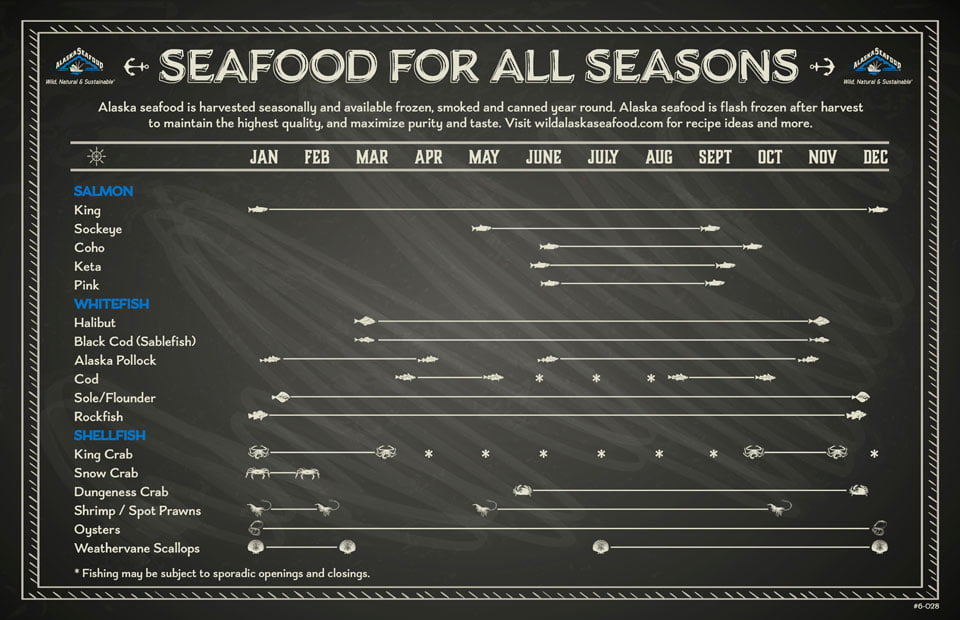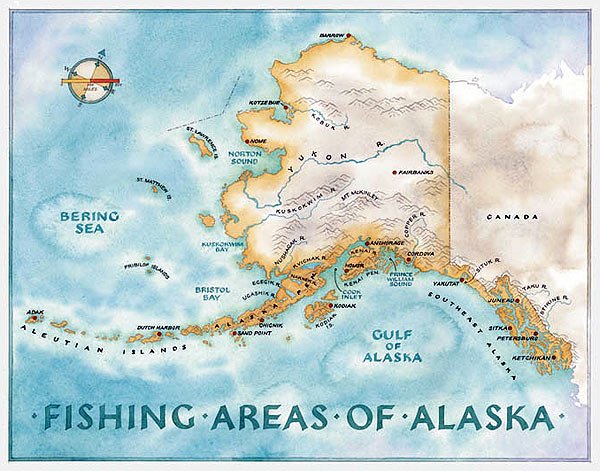The salmon fishing season
Alaska, world renowned for great salmon fishing, is one of the only places in the world where salmon fishing is still wild. The abundance of salmon-dependent predators and scavengers is a living testament to the success of Alaska’s salmon fishery resource management policy. Alaska salmon is an important and integral part of the natural ecosystem in which these species live. Unlike other parts of the world, Alaskan salmon populations are not threatened or endangered.
The season begins in May with the first arrivals of salmon in the rivers of the Gulf of Alaska, throughout the summer they continue to rise the coast of the Bering Sea until the last ones finish their routes at the end of September in the rivers of the “Northern Sounds”. (see map)
At the end of their feeding cycle in the high seas, the salmon return to their waters of birth to go up the rivers to spawn, and thus end their life cycle.







